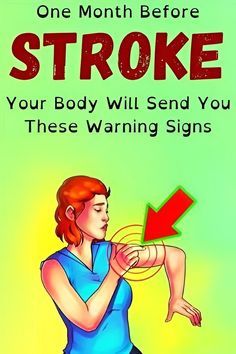Stroke, a serious medical condition caused by interrupted blood flow to the brain, can have devastating consequences if not promptly addressed. While strokes often strike suddenly and without warning, research suggests that the body may actually send out subtle signals in the weeks leading up to an impending stroke.
Recognizing these warning signs is crucial for early intervention and stroke prevention. This essay delves into the various symptoms and indicators that may manifest in the month preceding a stroke, empowering individuals to take proactive measures to safeguard their health.
Pre-Stroke Warning Signs:
1. Transient Ischemic Attacks (TIAs):
Also known as mini-strokes, TIAs occur when blood flow to the brain is temporarily disrupted. While TIAs typically resolve within a few minutes to hours, they serve as important warning signs of an impending stroke. Symptoms may include sudden weakness or numbness in the face, arm, or leg, especially on one side of the body, difficulty speaking or understanding speech, and temporary loss of vision in one eye.
2. Headaches and Migraines:
Persistent headaches, especially those accompanied by changes in severity or frequency, can sometimes precede a stroke. These headaches may be more intense than typical migraines and may be accompanied by other neurological symptoms such as dizziness, confusion, or difficulty speaking.
3. High Blood Pressure:
Uncontrolled hypertension is a leading risk factor for stroke. In the month leading up to a stroke, individuals may experience spikes in blood pressure, which can manifest as headaches, dizziness, chest pain, or visual disturbances. Monitoring blood pressure regularly and seeking medical attention for persistent elevations is crucial for stroke prevention.
4. Transient Neurological Symptoms:
In addition to TIAs, individuals may experience transient neurological symptoms such as sudden weakness or clumsiness in the limbs, difficulty walking or maintaining balance, and temporary loss of coordination. These symptoms may come and go but should not be ignored, as they could signal an underlying vascular issue.
5. Changes in Mental Status:
Some individuals may experience cognitive changes in the weeks preceding a stroke, including confusion, memory loss, and difficulty concentrating. These changes may be subtle at first but can worsen over time if left untreated.
Conclusion:
While strokes often occur suddenly and without warning, the body may provide subtle clues in the month leading up to an impending stroke. Recognizing these warning signs and seeking prompt medical attention can greatly improve outcomes and reduce the risk of long-term disability. Individuals should pay close attention to changes in neurological function, blood pressure, and mental status, and consult a healthcare professional if any concerning symptoms arise. By staying vigilant and proactive, individuals can take proactive steps to protect their brain health and reduce the risk of stroke-related complications.



